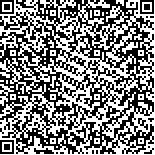| 摘要: |
| 利用2010 年3 月—2013 年2 月南海金枪鱼延绳钓探捕与渔业生产监测取得的生物学数据和生产数据, 对南海的大眼金枪鱼(Thunnus obesus)和黄鳍金枪鱼(Thunnus albacres)的生物学特性和渔场分布进行了研究。结果表明: (1) 南海大眼金枪鱼叉长范围50—169cm, 平均为111.8cm, 体重范围2.45—87kg, 平均为33.2kg, 叉长(FL)体重(W)关系: W=1.74×10-5FL3.01, 性腺成熟度Ⅱ期居多, 占总尾数的45.27%。绝对怀卵量109.46—456.95 万粒, 摄食强度以0—2 级为主。大眼金枪鱼延绳钓渔场春夏季分布于南沙西北部和南沙中西部海域; 秋冬季分布于西、中沙和南沙西北部海域。渔获水深90%集中在150—400m。(2) 南海黄鳍金枪鱼叉长范围41—180cm, 平均为107.9cm, 体重范围1.2—77.5kg, 平均为27.9kg, 叉长体重关系: W=2.19×10-5FL2.94, 性腺成熟度以Ⅱ—Ⅳ期居多, 占总尾数的89.01%, 绝对怀卵量15—154 万粒, 摄食强度以1—2 级为主。黄鳍金枪鱼延绳钓渔场春夏季分布于南沙西北部和南沙中西部海域; 秋冬季分布于西、中沙、南沙西北部、南沙中西部海域。渔获水深93.75%集中在50—350m。西沙西部和南沙西北部海域是灯光围网和灯光罩网捕捞金枪鱼的重要渔场。研究认为: (1) 在南海可发展小型冷海水延绳钓船, 在每年10 月末—次年5 月初在西沙东北海域开展浅水延绳钓作业; (2) 在南海的岛礁附近设置PAYAO 群, 开展金枪鱼灯光罩网或围网捕捞。(3) 目前取得的资料仍然有限, 未来仍需进一步调查, 以掌握南海金枪鱼种群动态, 为渔业开发和养护提供建议。 |
| 关键词: 南海 大眼金枪鱼 黄鳍金枪鱼 生物学特性 分布 |
| DOI:10.11693/hyhz20130600081 |
| 分类号: |
| 基金项目:国家自然科学基金项目,41376158号;国家科技支撑项目,2012BAD18B01号;广东省海洋渔业科技推广专项,A201108H01号;教育部特色专业建设点项目,527001006号。 |
附件 |
|
| BIOLOGY AND DISTRIBUTION OF THUNNUS OBESUS AND THUNNUS ALBACRES IN THE SOUTH CHINA SEA |
|
FENG Bo, LI Zhong-Lu, HOU Gang
|
|
Fisheries College, Guangdong Ocean University, Zhanjiang 524025, China
|
| Abstract: |
| We conducted a longline fishing and operation survey in the South China Sea from March 2010 to February 2013, during which biology and fishing ground of large tuna were studied to understand the current tuna stock in the region. Statistical study with SPSS shows that, for Thunnus obesus, the mean fork length was 111.8 cm in a range of 50—169 cm and mean weight 33.2kg in a range of 2.45—87kg. The relationship between fork length (FL) and weight (W) can be expressed by W=1.74×10-5FL3.01. Maturity at II of the gonad was dominant up to 45.27%. The absolute fecundity was 10.95 to 45.7 million eggs. Feeding intensity was mainly in the class 0 to 2, occupied 77.08%. In spring and summer, the longline fishing grounds for T. obesus were located in the northwestern and central western Nansha waters, while in fall and winter, in Xisha, Zhongsha, and the northwestern Nansha waters. An amount of 90% catch was from 150 to 400m water layers. For Thunnus albacres, the mean fork length was 107.9cm in a range of 41—180cm, mean weight 27.9kg in range of 1.2—77.5kg. The relationship between fork length and weight can be calculated by W=2.19×10-5FL2.94. Maturity at Ⅱ to Ⅳ of the gonad was dominant up to 89.01%. The absolute fecundity was 1.5 to 15.4 million eggs. Feeding intensity was mainly in the class 1 to 2, occupied 63.73%. In spring and summer, the longline fishing grounds for T. albacres were located in the northwestern and central western Nansha waters, while in fall and winter, in Xisha, Zhongsha, and the northwestern and central western Nansha waters. An amount of 93.75% catch was from 50 to 350m water layers. The important tuna fishing ground for light purse seine and light falling net distributed in the western Xisha and northwestern Nansha waters. Therefore, we suggest (1) to build cooling sea-water longliners and to shoot shallow longline in the northeastern Xisha waters from August to May, (2) to carry falling net fishing or seine pursing with payaos near islands in the South China Sea, and (3) to make more investigations to understand tuna stock dynamics in the South China Sea and to provide suggestions on resource exploitation and conservation. |
| Key words: South China Sea Thunnus obesus Thunnus albacres biological characteristic distribution |
